
In the 1940s, 1950s and 1960s, metal serving pieces could be divided into two categories: fancy and not-very-fancy.
Fancy were the silver and, more commonly, silverplate tea sets, trays, vegetable dishes, platters, gravy boats, bowls and other table what-have-yous that were trotted out for holidays, when the boss or teacher came for dinner and maybe Sunday supper.
Not-very-fancy were the hammered aluminum servers. These were much more laid back, going to bake sales, backyard barbecues, potluck suppers and hanging out on end tables filled with mixed nuts in shells waiting to be cracked.
It was a tale of two servers. Silverplate lived on the sideboard or buffet or in the hutch. Hammered aluminum lived in the kitchen, the pantry or perhaps the back of a cupboard.
That was then. Of course there’s still love for silverplated teapots with saucy little feet and urn-shaped champagne buckets, but not necessarily on the dining table. Back in the day, it would have been etiquette heresy to plop your amaryllis in a champagne bucket. But now? Let me get my potting soil.
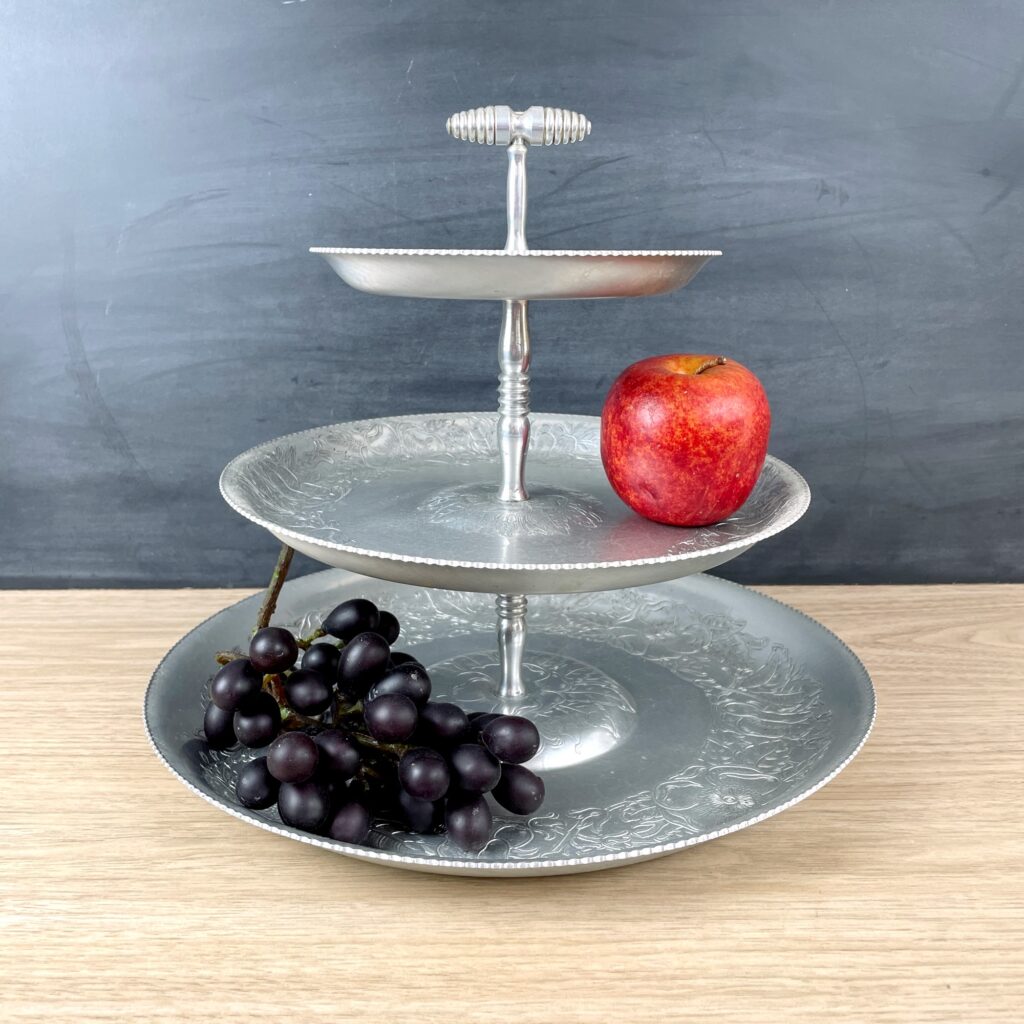
Hammered aluminum remains a good value on the vintage market. Pieces in mint condition by quality makers are pricier than well used or medium quality pieces, but neither is expensive. There’s plenty out there to choose from. It was made in a vast array of patterns by a vast array of makers. Florals and botanicals, scrolls and flourishes, geometrics were common. Quality varies from maker to maker. Rodney Kent, Continental, Wendell August and Buenilum are among the nicer brands. You can judge better quality from just okay pieces by the thickness of the metal and the quality of the stamped image.
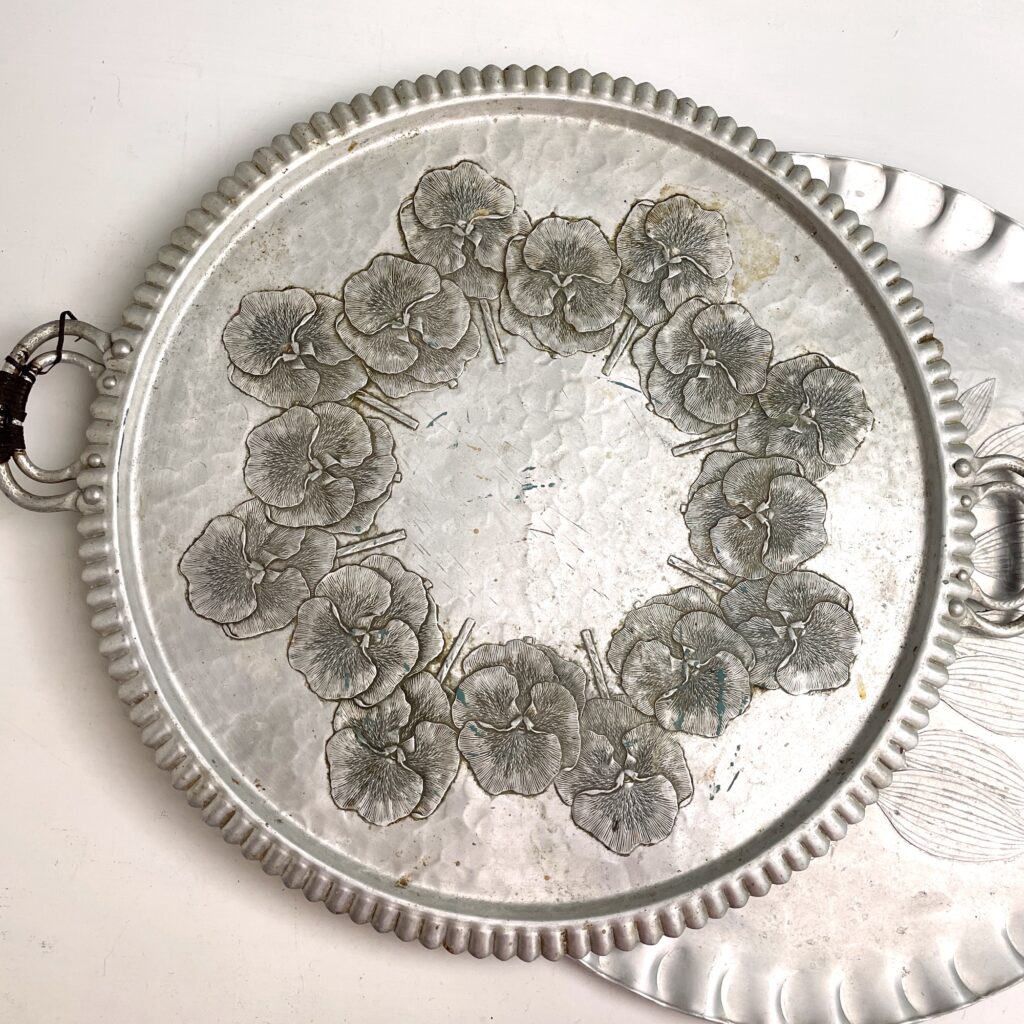
Condition wise, hammered aluminum was a workhorse, so pieces can have scratches, scuffs, abrasions, water spots and pieces of masking tape with the family name on the back. When you find a kitchen-fresh piece, it probably has a nice even layer of kitchen grime and dust, as you would too if you had been living in a kitchen for 50 years. A nice sudsy sink with a good grease cutting dish detergent and a soft sponge or cloth will at least diminish that layer. You may need a toothbrush and cotton swabs to get into the nooks and crannies. FYI, Abrasive scrubbies and gritty cleaners are to hammered aluminum what wooden stakes are to vampires. Never should they cross paths. And the dishwasher is strictly out of the question.
Sometimes, dish detergent is not enough, which means you might need to consider a further step. To polish or not to polish is a subject of debate. It’s your collection, you should do as you please. These not rare antiques that will diminish in value if you restore the shine. However, hammered aluminum was not intended to be shiny like silver plate. It has more of a soft warm burnished glow. That being said, I like mine polished.
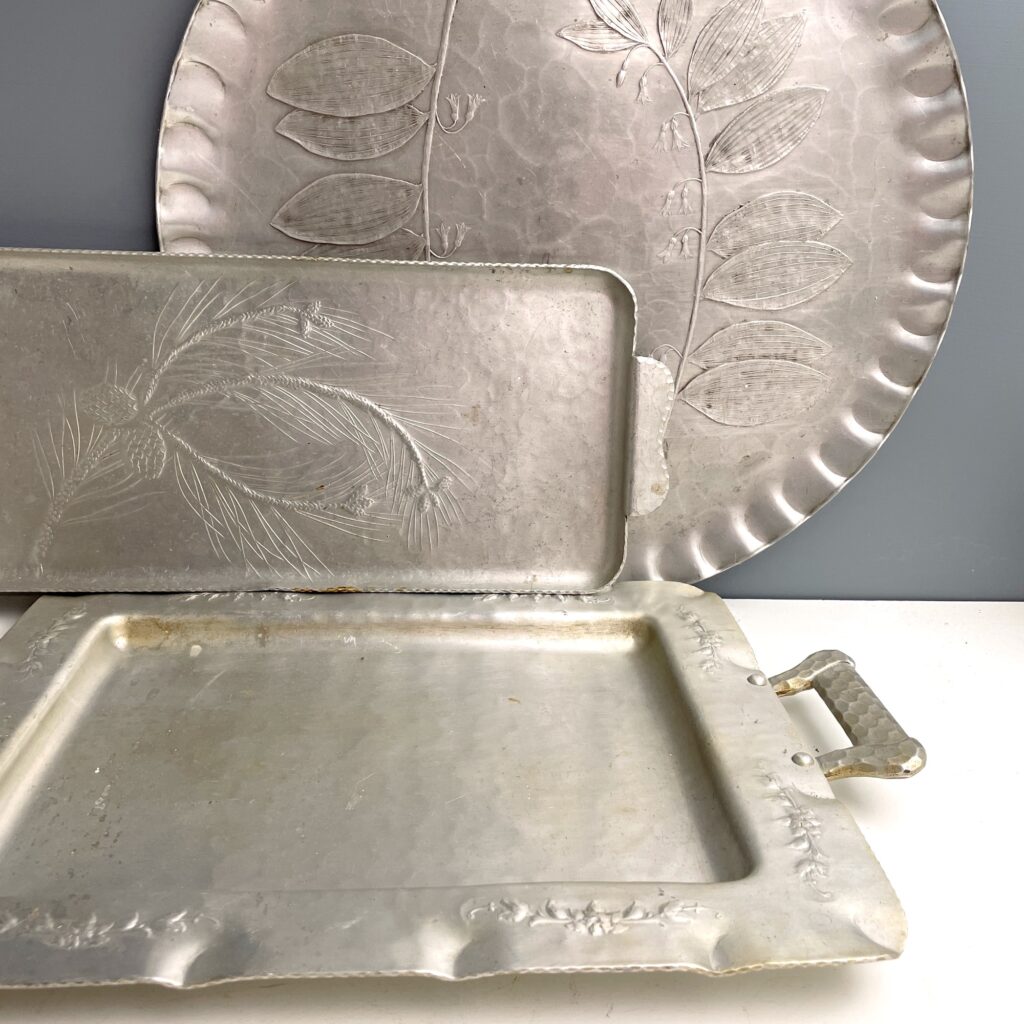
For years, I’ve polished my aluminum with Wenol metal polish. I was fairly satisfied with it. Then I read about using a metal polish from the auto supply store on Dannie Woodard’s blog, The Aluminist. Since Dannie Woodard quite literally wrote the book on hammered aluminum, it seemed a good idea to take her advice, which led to…
The Hammered Aluminum Polish Throwdown
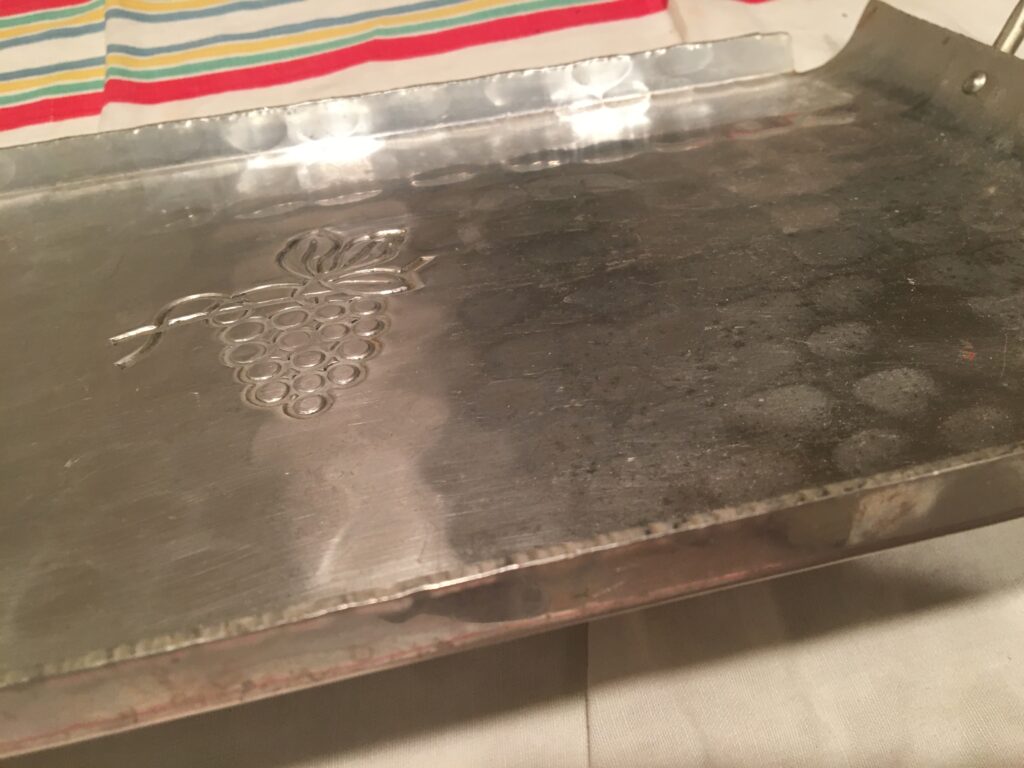
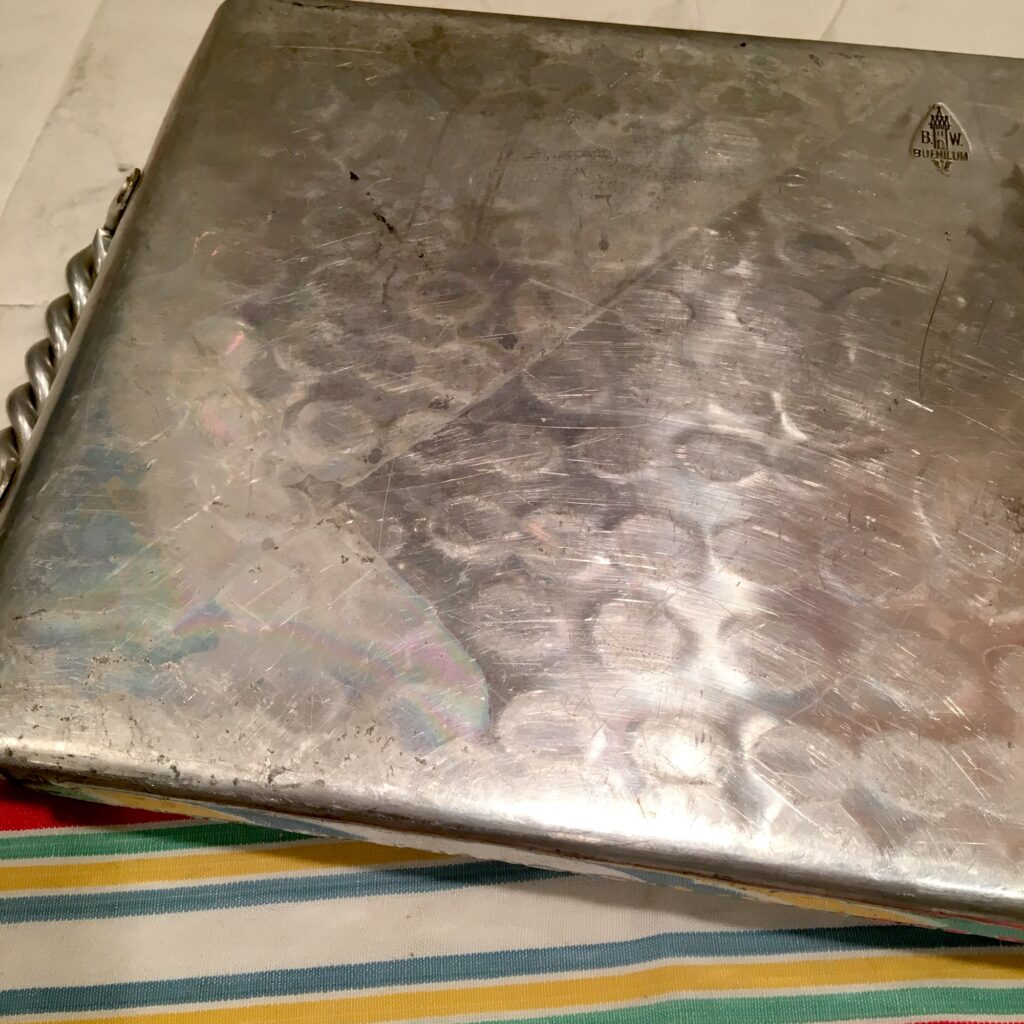
The tray: a Buenilum double handled rectangle. Note that there is a layer of hazy grease-based residue in the tray’s dimples left even after washing.
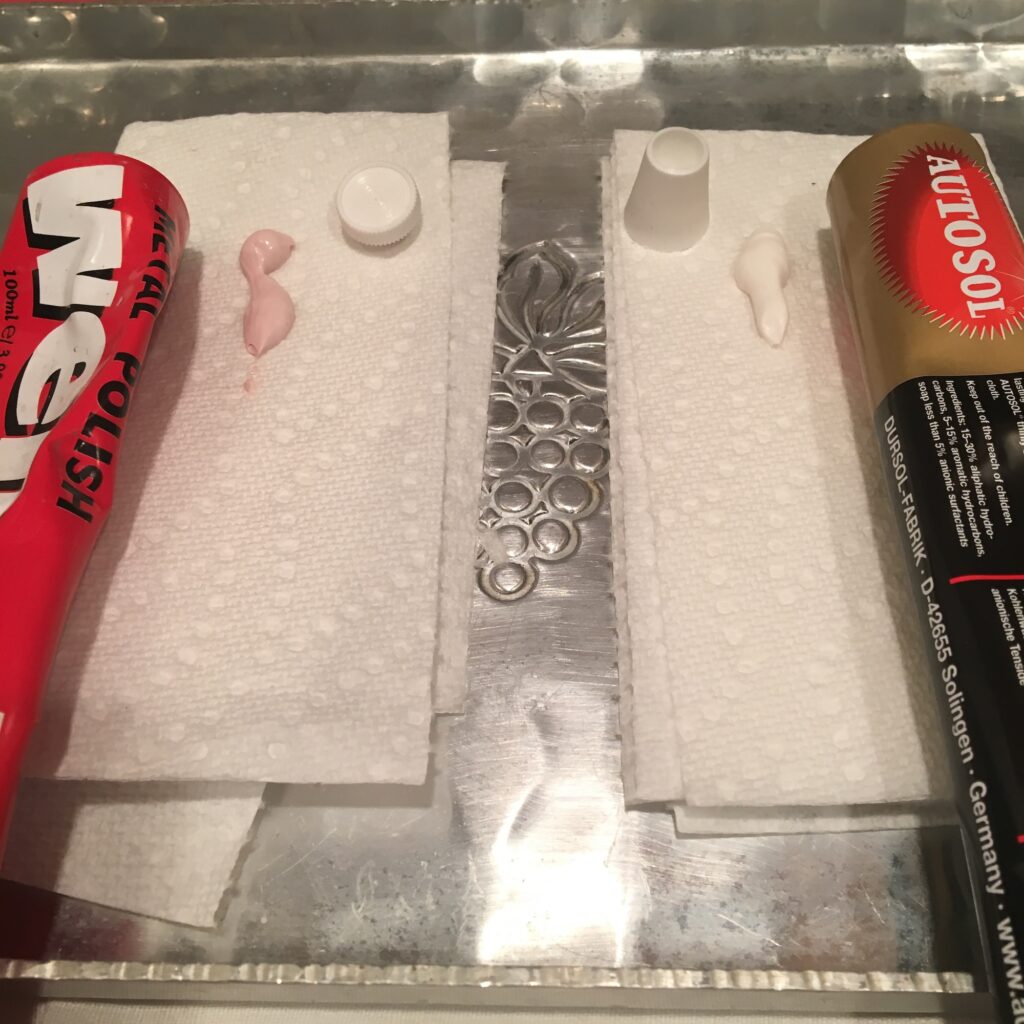
The contenders: On the left, Wenol Metal Polish. On the right, Autosol Metal Polish. Equal amounts applied thinly and buffed. (Yes, I use paper towels, soft cloths are better, but paper towels are easier). Metal polishes remove a tiny bit of the surface of whatever you are polishing, so always proceed slowly and gently.
The results: Autosol is stronger and/or more aggressive than Wenol. The Wenol tried mightily, but it left behind a lot of the residue in the dimples on the tray. However, it produced a more satin, less bold finish. The Autosol ate up the grease residue and buffed to a fairly high shine. Ultimately, I used the Autosol to finish up the Wenol side.
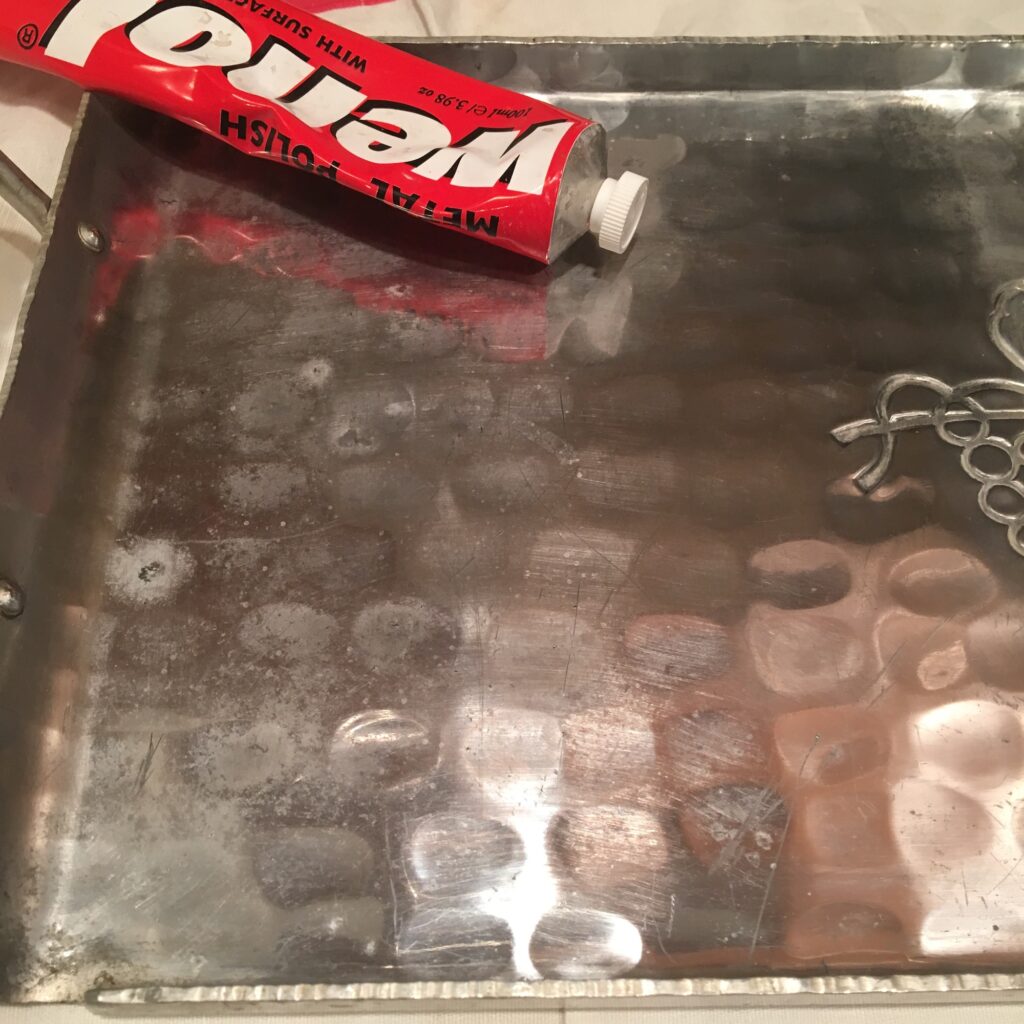
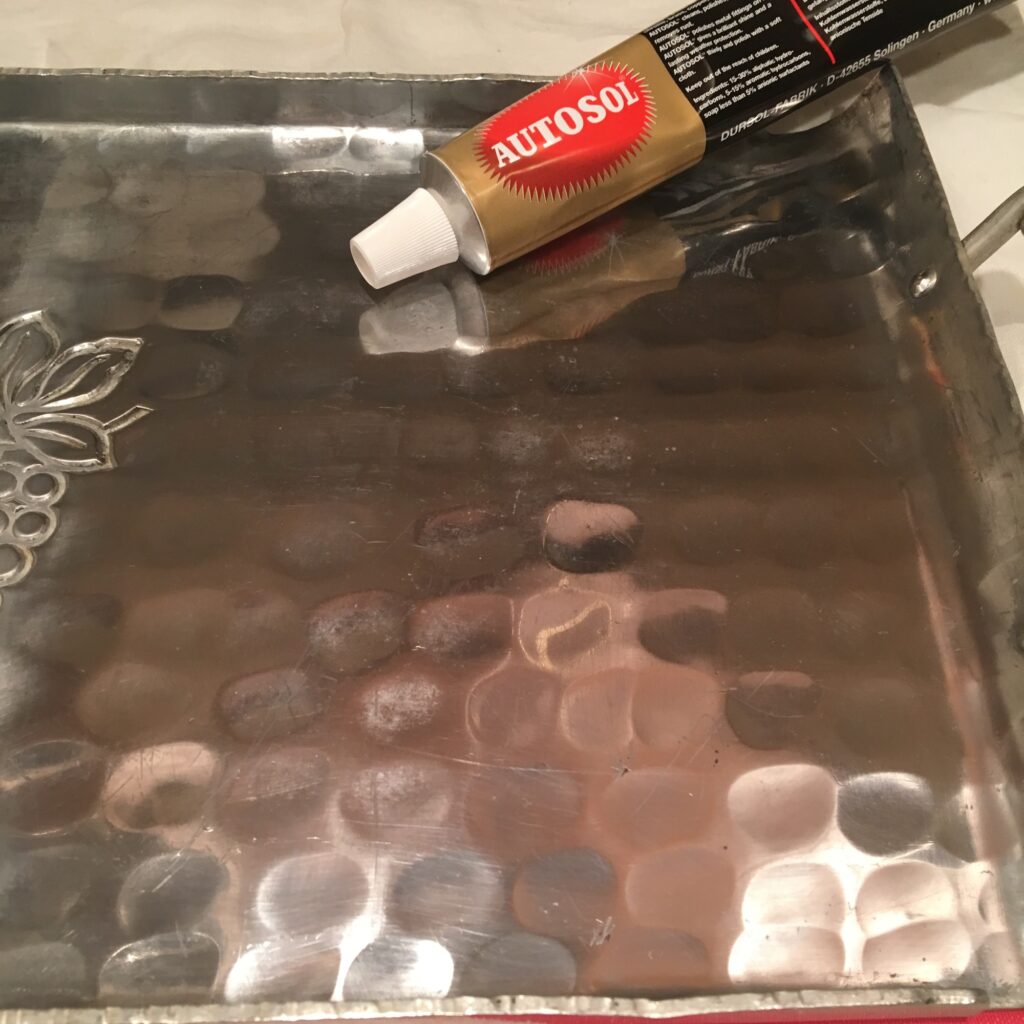
Note: Some hammered aluminum has a dark patina in design crevices. There’s a fair chance it was put there by the maker to bring out the details in the accents. Polishing can often remove that patina.
This flashback post was originally published on Vintage Unscripted in 2016.
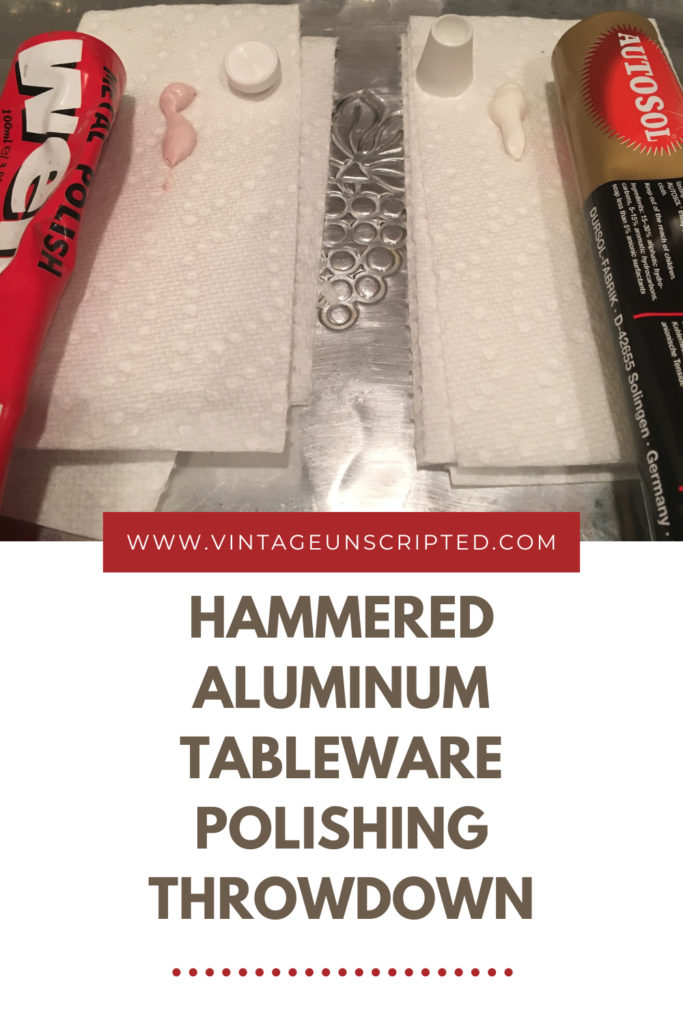

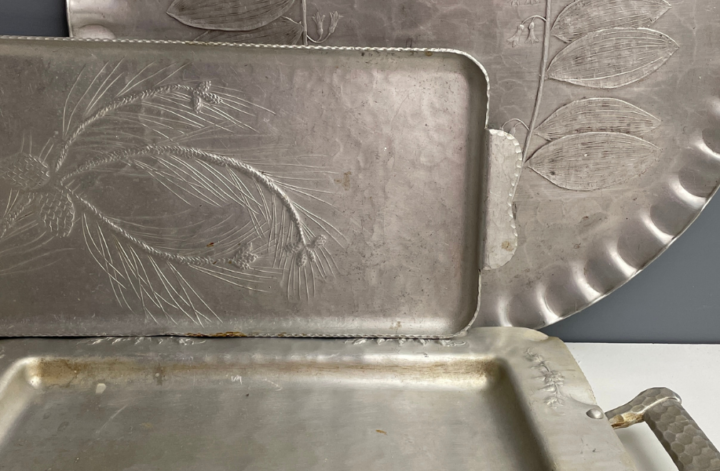

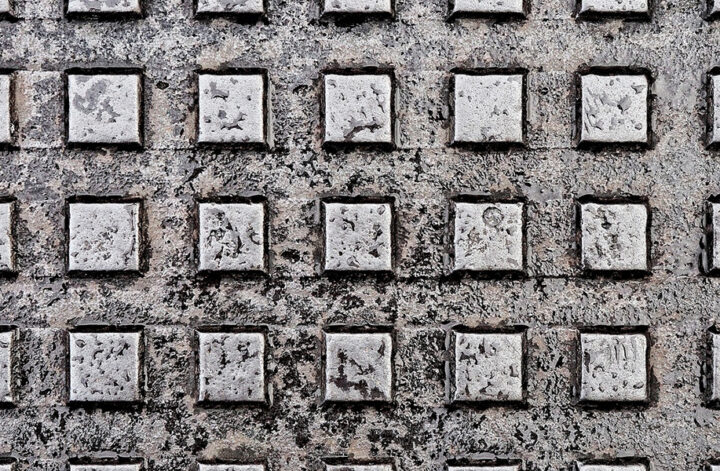
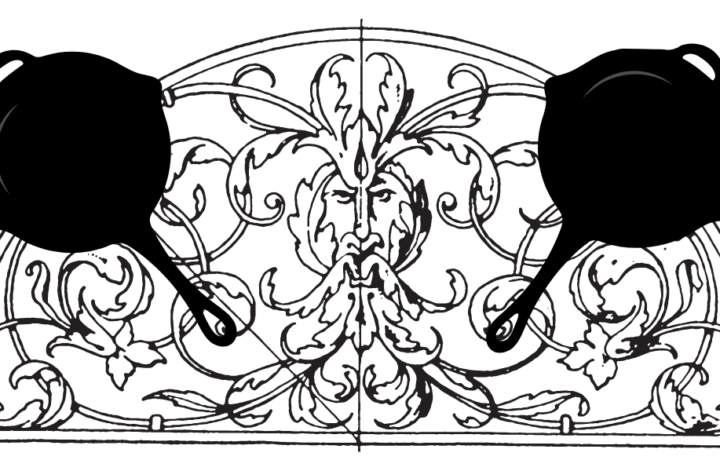
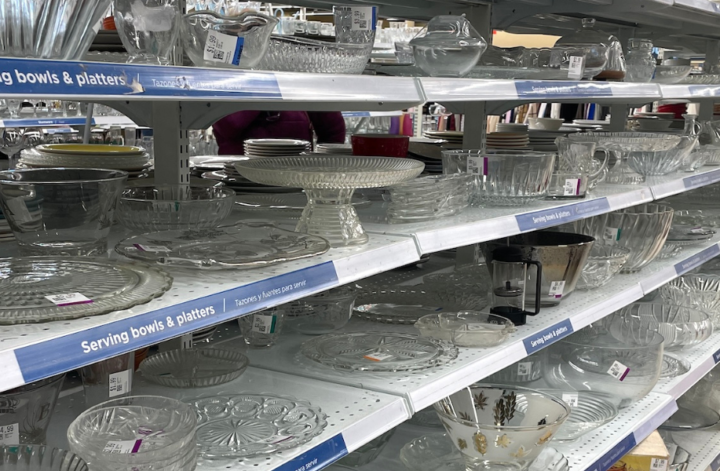
7 comments
Help! Is there any way to restore a hammered aluminum handled bowl like the one in your photo, that was once run through the dishwasher?
Hi Chris, Any good polishing compound will do the job, however, be ready for lots of elbow grease. You may want to try soaking in a vinegar or lemon juice solution first. Dishwashing detergent is alkaline, while vinegar and lemon juice are acid solutions.
Hello, What is the bowl with the centerpiece that has holes called? And, what was it used for?
Kara,
It is actually a nut bowl. The center holes are for the picks and nutcrackers in the center.
Hey Kara. That’s a nut bowl, and the holes are for nutcrackers and nutpicks.
Hi there,
I’ve only just discovered your wonderful site. FABULOUS. Once, a CT resident myself, I now live in the Ithaca, NY region and do my best to thin out the vintage aluminum supply by the day!
Question. Do Rodney Kent pieces ever come along unsigned? I just bought a tidbit handled tray with all the right design but no stamp. Hmmm. Thanks for any info.
Love your blog! Wish you were my neighbor! Happy Holidays, Evie Weinstein
Evie,
Thanks for finding us and thanks for your question! I wish I could authoritatively answer about unsigned Rodney Kent, but I honestly don’t know. I found this in a Rodney Kent blog from 2014: “Recently, I came across another ice bucket at a very reasonable price and I bought it. I was very disappointed when I got it. While the handles looked the same, the quality wasn’t there. The design was flat and there seemed to be an excess of metal that was never cleanly finished on the handles either. Dannie Woodward, of The Aluminist blog had told me once in an email that many of these unmarked pieces that had the iconic marks of Rodney Kent, were never positively identified as true Krischer Metal Products. An Italian company, Nasco copied many of the design elements. It could be from their line. I have seen Nasco, Italy copies of the casserole holder and the handles are very similar, although not the same…. at least not the ones now stamped on the bottom with the Nasco stamp. That could be because they were forced to change or it could be that they were always different.”
The Alumist blog, which I used as a source for my post, has contact information. I bet you will get a solid answer from Dannie. Again, thanks for reading our blog and good luck! http://aluminist.blogspot.com/p/contact.html